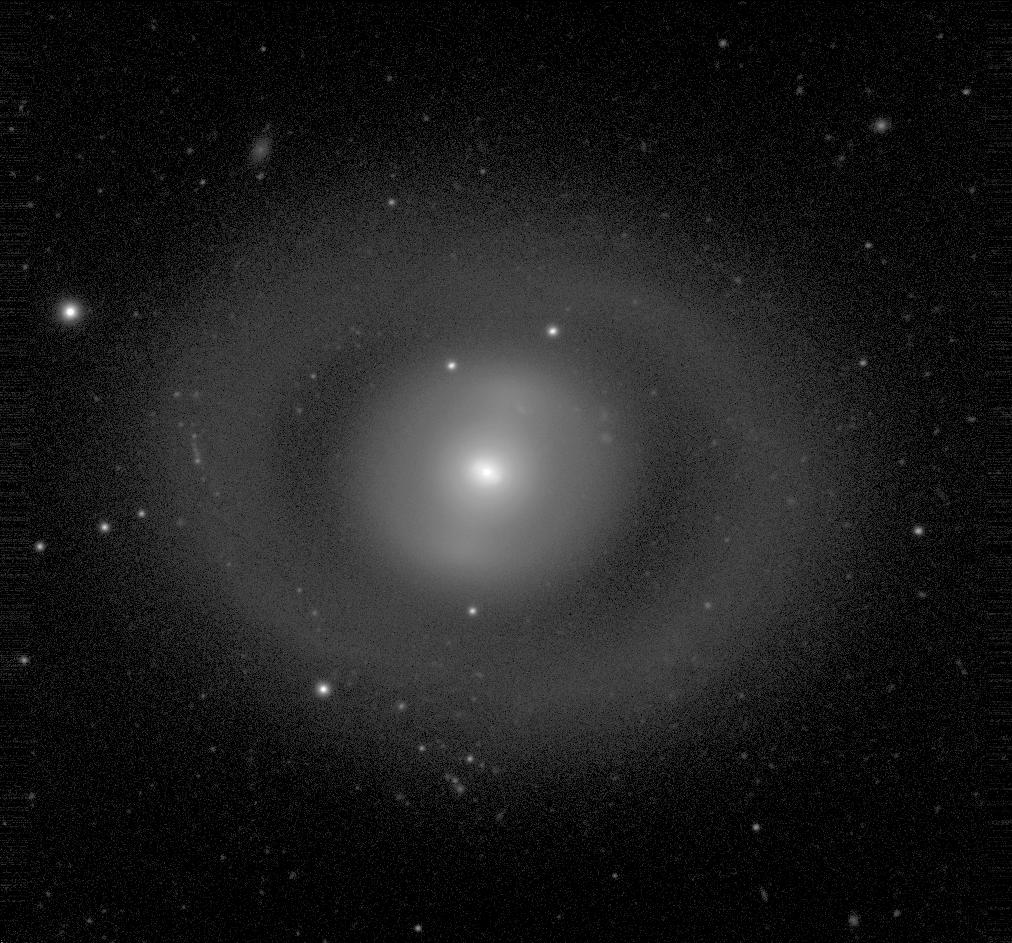

De Vaucouleurs Atlas Type: (R)SB(rl)0+
Filter: B
Telescope: NOT 2.5-m
North up , East left
Field Dimensions: 6.4 x 6.0 arcminutes
RC3 Type: (R)SB(r)0+
RSA Type: RSB02(3)
Surface Brightness Range Displayed: 16.9-28.0 mag per square arcsec
Absolute Blue Magnitude: -20.4
De Vaucouleurs Atlas Description:
The dominant feature of this galaxy is the strong outer ring , one of the best known cases of this phenomenon. The ring is smooth in blue light, and in the B-V color index map, it shows a color similar to the bar/lens region. Gallagher and Wirth (1980) photoelectrically measured the colors of the bulge, bar/lens , ``gap" [the region between the (rl) and the (R)], and outer ring , and found the outer ring to have colors similar to the bar/lens region, an area dominated by old stars. Thus, the outer ring is also dominated by old stars, although there is an interesting chain of blue knots in the ring due east of the center.
Complete detachment of an outer ring may signify a feature in an advanced evolutionary state. In numerical models (e.g., Byrd et al. 1994), outer rings usually begin as spirals and slowly become more detached. Eventually, also, they lose the morphological distinctions that define the usual R1 and R2 subclasses of outer pseudorings.
The inner section of NGC 2859 is very much brighter than the outer ring , and includes an ansae -type bar. Surrounding the bar is a very diffuse inner ring that is barely distinguishable from a lens ; it is visible mainly because its inner edge is slightly sharper than its outer edge. We use the (rl) notation to highlight its weakness.
In the central area, there is a small secondary bar which is oriented almost perpendicularly to the primary bar (Kormendy 1979; Erwin 2004). The color index map shows a faint spiral dust arc in this region.
The S0+ classification is based on the well-defined structure of the galaxy, and its complete lack of spiral arms.